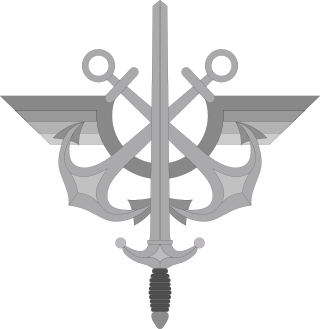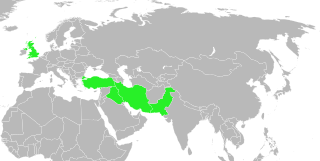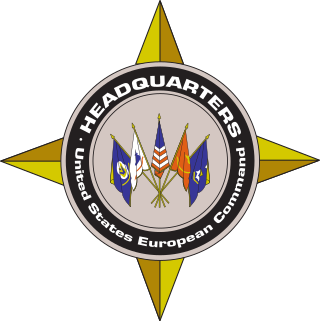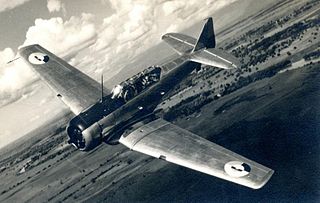
The French Armed Forces are the military forces of France. They consist of four military branches – the Army, the Navy, the Air and Space Force and the National Gendarmerie. The National Guard serves as the French Armed Forces' military reserve force. As stipulated by France's constitution, the president of France serves as commander-in-chief of the French military. France has the eighth largest defence budget in the world and the second largest in the European Union (EU). It also has the largest military by size in the EU.As of 2021, the total active personnel of the French Armed Forces is 270,000. While the reserve personnel is 63,700, for a total of 333,000 personnel. If we include the active personnel of the National Gendarmerie, the total men power of all the French Armed Forces combined is 435,000 strong. A 2015 Credit Suisse report ranked the French Armed Forces as the world's sixth most powerful military.

The Axis powers, originally called the Rome–Berlin Axis and also Rome–Berlin–Tokyo Axis, was a military coalition that initiated World War II and fought against the Allies. Its principal members were Nazi Germany, the Kingdom of Italy and the Empire of Japan. The Axis were united in their far-right positions and general opposition to the Allies, but otherwise lacked comparable coordination and ideological cohesion.

The Central Treaty Organization (CENTO), formerly known as the Middle East Treaty Organization (METO) and also known as the Baghdad Pact, was a military alliance of the Cold War. It was formed on 24 February 1955 by Iran, Iraq, Pakistan, Turkey, and the United Kingdom. The alliance was dissolved on 16 March 1979.
Base Realignment and Closure (BRAC) was a process by a United States federal government commission to increase the efficiency of the United States Department of Defense by coordinating the realignment and closure of military installations following the end of the Cold War. Over 350 installations have been closed in five BRAC rounds: 1988, 1991, 1993, 1995, and 2005. These five BRAC rounds constitute a combined savings of $12 billion annually.

Almost every country in the world participated in World War II. Most were neutral at the beginning, but only a relative few nations remained neutral to the end. The Second World War pitted two alliances against each other, the Axis powers and the Allied powers. It is estimated that 74 million people died, with estimates ranging from 40 million to 90 million dead. The leading Axis powers were Nazi Germany, the Empire of Japan and the Kingdom of Italy; while the United Kingdom, the United States, the Soviet Union and China were the "Big Four" Allied powers.

The United States European Command (EUCOM) is one of the eleven unified combatant commands of the United States military, headquartered in Stuttgart, Germany. Its area of focus covers 21,000,000 square miles (54,000,000 km2) and 51 countries and territories, including Europe, The Caucasus, Russia and Greenland. The Commander of the United States EUCOM simultaneously serves as the Supreme Allied Commander, Europe (SACEUR) within NATO, a military alliance. During the Gulf War and Operation Northern Watch, EUCOM controlled the forces flying from Incirlik Air Base.

The Allies, formally referred to as the United Nations from 1942, were an international military coalition formed during World War II (1939–1945) to oppose the Axis powers. Its principal members by the end of 1941 were the "Big Four" – the United Kingdom, United States, Soviet Union, and China.
The Commonwealth of the Philippines was attacked by the Empire of Japan on 8 December 1941, nine hours after the attack on Pearl Harbor. Although it was governed by a semi-independent commonwealth government, the United States of America controlled the Philippines at the time and possessed important military bases there. The combined Filipino-American army was defeated in the Battle of Bataan, which saw many war crimes committed and the Battle of Corregidor in April 1942, but guerrilla resistance against the Japanese continued throughout the war. Uncaptured Filipino army units, a communist insurgency, and supporting American agents all played a role in the resistance. Due to the huge number of islands, the Japanese never occupied many of the smaller and more minor islands. The Japanese control over the countryside and smaller towns were often tenuous at best.

During World War II, the Spanish State under Francisco Franco espoused neutrality as its official wartime policy. This neutrality wavered at times, and "strict neutrality" gave way to "non-belligerence" after the Fall of France in June 1940. Franco wrote to Adolf Hitler offering to join the war on 19 June 1940 in exchange for help building Spain's colonial empire. Later in the same year Franco met with Hitler in Hendaye to discuss Spain's possible accession to the Axis Powers. The meeting went nowhere, but Franco did help the Axis—whose members Italy and Germany had supported him during the Spanish Civil War (1936–1939)—in various ways.

Naval Air Station Keflavik (NASKEF) is a United States Navy air station at Keflavík International Airport, Iceland, located on the Reykjanes peninsula on the south-west portion of the island. NASKEF was closed on 8 September 2006, and its facilities were taken over by the Icelandic Defence Agency as their primary base until 1 January 2011, when the Agency was abolished and the base handed over to the Icelandic Coast Guard, which has operated the base until 2017. US forces returned to Keflavik in 2016, renovating parts of the base to accommodate P-8As on short duration/expeditionary detachments.

Due to the strong historical, political, cultural and religious ties between them, Greece and the United States today enjoy excellent diplomatic relations and consider each other an ally. Today Greece is one of the United States's closest allies in the world.

Al Udeid Air Base is one of two military bases southwest of Doha, Qatar, also known as Abu Nakhlah Airport.

Torrejón Air Base is both a major Spanish Air and Space Force base and the co-located Madrid–Torrejón Airport, a secondary civilian airport for the city and metropolitan area of Madrid, east-northeast of the city center in central Spain.

At the start of World War II in 1939, the Portuguese Government announced on 1 September that the 550-year-old Anglo-Portuguese Alliance remained intact, but since the British did not seek Portuguese assistance, Portugal was free to remain neutral in the war and would do so. In an aide-mémoire of 5 September 1939, the British government confirmed the understanding. As Adolf Hitler's occupation swept across Europe, neutral Portugal became one of Europe's last escape routes. Portugal was able to maintain its neutrality until 1944, when a military agreement was signed to give the United States permission to establish a military base in Terceira Island in the Azores and thus its status changed to non-belligerent in favour of the Allies.

The neutral powers were countries that remained neutral during World War II. Some of these countries had large colonies abroad or had great economic power. Spain had just been through its civil war, which ended on 1 April 1939 —a war that involved several countries that subsequently participated in World War II.

Philippines–United States relations are the bilateral and diplomatic relations of the Republic of the Philippines and the United States of America. Its relations has been seen as historically strong and it is often described as a "special relationship," originating from the fact that the Philippines was a colony of the United States between 1898 and 1946. The former Philippine president Rodrigo Duterte, however, was supportive of a foreign policy that was less dependent on the United States, favoring one that prioritized closer relations with China and Russia, despite the Philippines and the U.S. having a mutual defense treaty dating from 1951 to the present. In 2014, the countries signed an enhanced defense cooperation agreement that began its first phase of implementation in 2019.
The foreign relations of Third Reich were characterized by the territorial expansionist ambitions of Germany's dictator Adolf Hitler and the promotion of the ideologies of anti-communism and antisemitism within Germany and its conquered territories. The Nazi regime oversaw Germany's rise as a militarist world power from the state of humiliation and disempowerment it had experienced following its defeat in World War I. From the late 1930s to its defeat in 1945, Germany was the most formidable of the Axis powers - a military alliance between Imperial Japan, Fascist Italy, and their allies and puppet states. Adolph Hitler made most of the major diplomatic policy decisions, while foreign minister Konstantin von Neurath handled routine business.

The history of Colombia during World War II began in 1939. Although geographically distant from the main theaters of war, Colombia played an important role in World War II because of its strategic location near the Panama Canal, and its access to both the Atlantic and Pacific Oceans. Colombia also experienced major changes to its military and society, due to increased influence from the United States, but it was also able to maintain its sovereignty throughout the war, as well as avoid sending troops into battle.
The Enhanced Defense Cooperation Agreement (EDCA) is an agreement between the United States and the Philippines intended to bolster the American–Philippine alliance. The agreement allows the United States to rotate troops into the Philippines for extended stays and allows the United States to build and operate facilities on Philippine bases for both American and Philippine forces. The U.S. is not allowed to establish any permanent military bases. The Philippines have personnel access to American ships and planes. This agreement has been the subject of criticism by some leftist groups in the Philippines.













